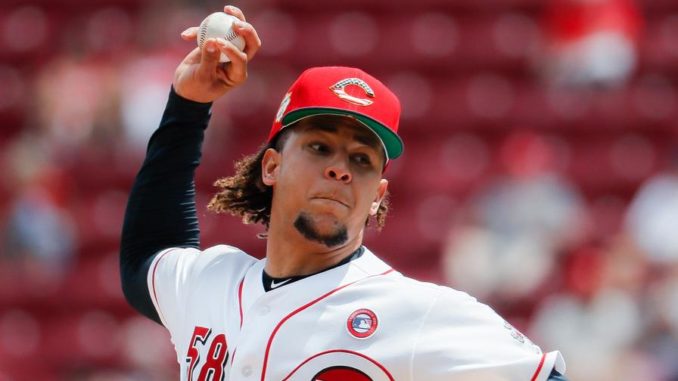
It’s that time of the year when baseball fans turn their longing eyes toward the good players on teams that are having poor seasons and begin to devise evermore ridiculous theoretical trade proposals that, if only the team would listen, would surely take them to the Promised Land of World Series Victory.
To be honest, most of the players that have been mentioned in trade rumors over the last couple months have left me feeling quite “meh”. Sure, there’s plenty that would help the Atlanta Braves, but quite frankly there’s not much that’s been bandied about that wouldn’t easily be topped by a return to form from Mike Foltynewicz and/or Kevin Gausman.
Then on Tuesday MLB.com’s Jon Morosi reported that while the Cincinnati Reds aren’t necessarily shopping All-Star right-hander Luis Castillo, “the Reds haven’t hung up the phone on teams who have called”.
The Reds made a lot of moves this offseason after four consecutive seasons with a losing record, the last three finishing last in the NL Central. They brought in veterans like Sonny Gray, Alex Wood, Tanner Roark, Jose Iglesias, Yasiel Puig, and Matt Kemp to try to bring respectability back to the Queen City. And while the team is no doubt improved over last season’s squad, they are still pretty much back where the were to begin with — under .500, last place in the NL Central. Of the new recruits, Iglesias, Gray, and Roark are playing up to standards. Puig has been slightly underperforming, Kemp was released in early May, and Wood has yet to throw a pitch in a game due to a back injury. Added to that are underwhelming performances from returning players like Joey Votto and Scooter Gennett and the Reds end up where they are.
There are four obvious pieces that the Reds could look to move before the trading deadline: Puig, Roark, Gennett, and reliever Jared Hughes. All three are free agents after the season (Hughes has a club option) and none will likely be given a qualifying offer. None will also likely command a big return back that will be a difference-maker to a last place club that’s tired of losing.
Meet Luis Castillo
In that sense, it makes sense for the Reds to take a look at what they could get for Castillo coming off his first All-Star appearance and with 4 years of team control remaining. He has been undoubtedly the most valuable player on the Reds this season and was just named by Fangraphs’s Kiley McDaniel as the player with the 50th-most trade value in the major leagues. Trading him, along with Puig, Roark, and the other short-timers, could give the Reds enough of a talent infusion with near major-league talent for the team to prep itself for another run.
Of course, anytime a team talks about trading their best player, it’s usually with the idea of a full tear-down Astros-style rebuild, but that doesn’t necessarily have to be the case for the Reds. Castillo is having a fine season, but he doesn’t necessarily profile as the kind of pitcher to build a rotation around over the long-term. Castillo is in his third year as a major-leaguer, and at 26 years old is showing all of the signs of having a career break-out. While he is walking batters at a career-high rate, he’s also limiting contact at nearly a league-leading rate and has done a good job keeping the ball in the park, a recipe that seems potent in the homer-happy offensive environment of the day.
Castillo was a well-regarded prospect, originally signing with the San Francisco Giants out of the Dominican Republic back in 2012, but was never considered a top-100 prospect. Before breaking into the majors with the Reds in 2017, he had been traded four times as a minor leaguer, twice by the Marlins, for such luminaries as Casey McGehee, Andrew Cashner, and Dan Straily.
What he is doing this year is impressive and he is undoubtedly the best pitcher on the Reds, but he’s probably not the proverbial “true ace” much desired by fanbases everywhere. Still, his recent track record and years of control mean that if he is available, he’s probably the best player available at this trading deadline.
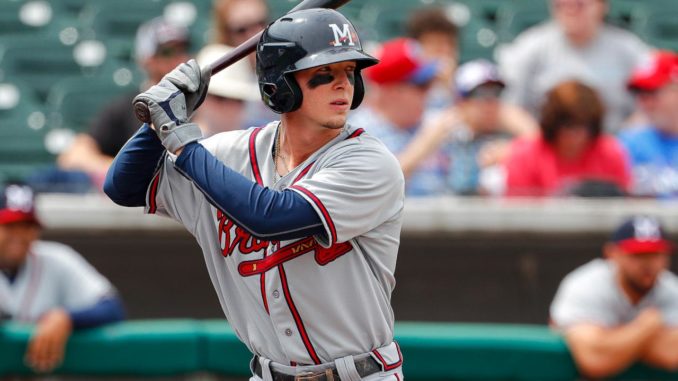
The Offer
The first thing we need to do is establish a dollar figure value for Luis Castillo. To that end, we’re aided by McDaniel’s valuation for Castillo, previously linked to above. He projects 13 fWAR for Castillo for the 2020-23 seasons. To that we’ll have to project the rest of 2019; he’d likely have 9 starts after the trading deadline so at his current pace that would be about 1.1 extra fWAR. So the Braves would be trading for an additional 14.1 wins above replacement though the length of his remaining team control.
Against that is his upcoming salary, which is variable due to his arbitration status from 2021-23. If he maintains projected production he’ll likely earn somewhere in the $21 million range through the three years of arbitration. To keep this simple, I’m treating the rest of this season plus 2020 as $600,000, so let’s go with a projected salary of $21.6 million.
The general current consensus is that 1fWAR of production is worth approximately $9 million in salary, though some reasonable assessments have it higher than $10 million. We’ll be conservative and use the $9 million figure, so Castillo’s 14.1 fWAR would be worth about $126.9 million of value. Subtracting out Castillo’s $21.6 million projected salary means that the Braves would need to compensate the Reds for approximately $105.3 million in excess value.
That… is a lot. The Reds also won’t likely be that interested in lower-level prospects that may take years to develop; they have never shown the appetite for a long rebuild, even when they were ostensibly rebuilding. They will want players that can contribute immediately, and be upgrades to the players they will likely lose to free agency.
Fortunately, the Braves have a number of players that could fit the bill.
According to Fangraphs, the Braves currently have six prospects that have a future value grade of 50 or higher. To that I will add Austin Riley and Touki Toussaint, two recent graduates of the list that still have six years of team control after this season.
Cristian Pache – 60
Austin Riley – 55
Drew Waters -55
Ian Anderson – 55
Kyle Wright – 55
William Contreras – 50
Bryse Wilson – 50
Touki Toussaint – 50
Using Fangraphs’s most recent future value-to-fWAR valuation, we can project future value like this:
Cristian Pache – $55 million
Austin Riley – $46 million
Drew Waters – $46 million
Ian Anderson – $34 million
Kyle Wright – $34 million
William Contreras – $28 million
Bryse Wilson – $21 million
Touki Toussaint – $21 million
Other highly-regarded prospects like Kyle Muller and Joey Wentz would be worth approximately $14 million in this valuation.
Another trade chip the Braves might use is Ender Inciarte, who is guaranteed $17.42 million from August 1 through the end of the 2021 season. Projecting 3 fWAR through the rest of the contract and going through this same exercise puts his excess value at $9.8 million; the Reds have reportedly long been interested in Inciarte and without an obvious spot in Atlanta right now let’s include this in any offer.
With Inciarte’s excess value subtracted from Castillo’s, that still leaves $96 million for the Braves to cover. Regardless of who to choose, this will be a painful loss of prospects from the Braves point of view.
Let’s go ahead and take Riley and one of Pache or Waters off the table. In the choice between Pache and Waters, I slightly prefer Pache because of his higher floor and higher potential upside, which is why I ranked him higher in the most recent prospect ranking. If I were the Reds, I would demand either Pache or Waters in any Castillo trade, otherwise why trade him? And if the I were the Braves, I would reluctantly part with Waters.
That still leaves $50 million in excess value for the Braves to cover. It’s time to finally spend some of this pitching capitol the Braves have acquired. Ian Anderson and Kyle Wright are both currently rated as 55 future value, but I prefer Ian Anderson’s youth and upside; likewise, the Reds would likely be fine with Wright’s readiness to take a spot in the rotation immediately. So let’s include Wright and lower the excess value to make up to $16 million.
At this point, the Braves can make an offer of several lower-level but still interesting prospects. If the Reds wanted quality, they could press for the likes of Jasseel De La Cruz, Huascar Ynoa, Kolby Allard, Joey Wentz, or Tucker Davidson, any of which could figure in the Reds plans in 2020. If they wanted quantity, they could look lower in the system and ask for lower-level prospects that could make quick rises through the organization, like outfielders Justin Dean or Trey Harris, infielder CJ Alexander, or pitchers like Nolan Kingham or Tristan Beck. Whatever the Reds tastes, the Braves could probably accommodate.
So there you have it, a trade for Luis Castillo. All it would take is Drew Waters, Kyle Wright, Ender Inciarte, and one or two more lower-level prospects.
Final Thoughts
Would I make this trade? I’m not sure. Castillo is a fine pitcher, and would certainly figure into a theoretical 3-man first-round rotation along with Dallas Keuchel and Mike Soroka. Castillo is also the first player rumored to be available that I would consider parting with one of the top 3 prospects (Pache, Waters, Anderson).
On the other hand, I’m not convinced Castillo is necessarily the “missing piece”. He would certainly improve the Braves chances this season and help in the off-season by taking some pressure off either re-signing Keuchel, getting a big bounce-back from Foltynewicz, or hoping one or two of the likes of Toussaint, Wright, Wilson, or someone else makes a big Soroka-esque step forward. But I also don’t project him necessarily as a guy that I would feel real great about going head-to-head with the best pitchers of other World Series contenders.
But in the end, it’s not what I would do, it’s what Alex Anthopoulos and the Braves front office would do, and Castillo is exactly the long-term, cost-controlled player that they have consistently coveted.

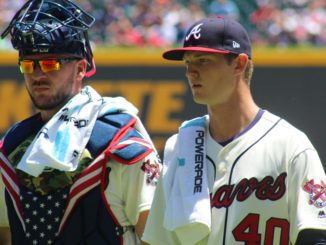
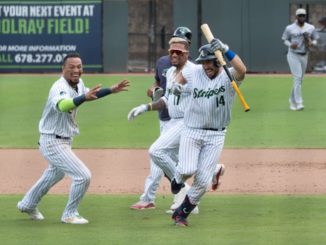
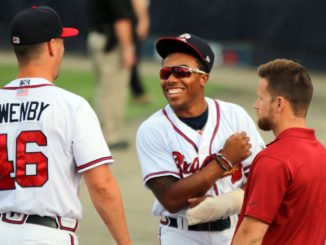
What would be be best for the Braves , a left or right handed starter?
I don’t think it matters much. I know the Dodgers are better against righties than lefties, but they still hit lefties pretty well.
Talent should trump handedness.